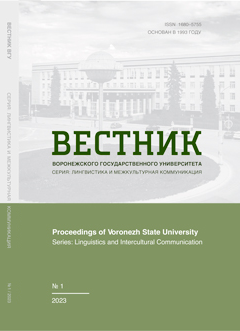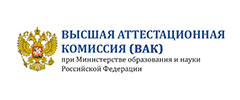Насколько реально «избавиться от стереотипов»? (полемические заметки на полях публикаций по проблемам теории межкультурной коммуникации)
Аннотация
В статье лаконично обсуждают отдельные тезисы, воспринимаемые во многих версиях теории межкультурной коммуникации, а также в ряде гуманитарных наук, как правило, в качестве аксиоматичных и в силу этого основополагающих для углубленных рассуждений в названном проблемном поле. Обсуждается одно из возможных объяснений сложившегося положения дел, имеющего широкое распространение. Анализируются причины, обусловливающие активное хождение соответствующих тезисов при изучении общих и частных теоретически значимых, а также прикладных вопросов теории межкультурной коммуникации. Обращается внимание на потенциальную опасность описанных аберраций как для теоретического и прикладного изучения проблемного поля, так и для реальных межкультурных контактов. Называются основания, по которым предельно общие по содержанию и по форме акцентированно гуманистические рекомендации, в принципе нацеленные на оптимизацию межкультурного взаимодействия, оказываются, по сути, в реальности малоэффективными и вводящими в добросовестное заблуждение различные категории потенциальных потребителей подобных рекомендаций. Делается попытка найти конструктивное решение актуальных теоретических и прикладных задач.
Скачивания
Литература
2. Pugatschjow V. [Faktoren und Merkmale der Manipulation]. In: Das groβe Lexikon Medien und Kommunikation. Hrsg. von Lео R. Tsvasman. Würzburg: Ergon-Verlag, 2006. Pp. 228–233.
3. Merten K. Macht der Medien [power of the (mass) media]. In: Das groβe Lexikon Medien und Kommunikation. Hrsg. von Lео R. Tsvasman. Würzburg: Ergon-Verlag, 2006. Pp. 224–226.
4. Antos G. Fake News. Warum wir auf sie reinfallen. Oder: “Ich mache euch die Welt, so wie sie mir gefӓllt”. Sprachdienst, 2017. Heft 1. Pp. 1–20.
5. Grischaewa L. I. Homo ludens, Fake News und Text, oder warum ӓndern sich die Textgestaltungsprinzipien? In: Russkaja germanistika: Ežegodnik Rossijskogo sojusa germanistov. Т. 17: Tipologija tekstov I diskursivnyje praktiki v nemeckojasyčnom kulturnom prostranstve. М.: FLINTA, 2020. S. 24–47.
6. Grišaeva L. I., Tsurikova L. V. Teroija mežkulturnoi kommunikacii: problem, podchody, analis. Voronež: Isdatelskij dom Voronežskogo gosudarstvennogo universiteta, 2018. 505 s.
7. Grišaeva L. I., Tsurikova L. V. Vvedenije v teoriju mežkulturnoi kommunikacii. М.: Academia, 2008. Isd. 5-е. 352 p.
8. Grišaeva L. I., Tsurikova L. V. Konceptualnyje osnovy analisa mežličnostnogo vsaimodeistvija nositeleij rasnych kultur (čast 1). In: Vestnik VGU. Seria: Linguistika I mežkulturnaja kommunikacija. 2013. No. 1. Pp. 14–21.
9. Grišaeva L. I., Tsurikova L. V. Konceptualnyje osnovy analisa mežličnostnogo vsaimodeistvija nositeleij rasnych kultur (čast 2). In: Vestnik VGU. Seria: Linguistika I mežkulturnaja kommunikacija. 2013. No. 2. Pp. 30–35.
10. Strategii uspecha i factory riska v mežkulturnoi kommunikacii : kol. monografika pod. red. Grišaevoi L. I. I Tsurikovoi L. V. Voronež: VGU, 2005. 391 p.
11. Franzke B. Romy Henfling. Interkulturelle Kompetenz Deutschland-Russland. 20 Critical Incidents mit Lösungsmustern. Bielefeld: W. Bertelsmann Verlag, 2017. 153 p.
12. Slate E. J. Sylvia Scholl-Machl. Beruflich in den USA. Trainingsprogramm für Manager, Fach- und Führungskrӓfte. Gӧttingen: Vandenhoeck& Ruprecht, 2006. 170 p.
13. Roth J. Eigenbilder, Fremdbilder, Zerrbilder : Zum Erscheinen des ersten russischen “Kulturknigge”. In: Blickwechsel. Münster, N.Y., München, Berlin: Waxman, 2003. Pp. 127–132.
14. Posner R. Kultursemiotik. In: Konzepte der Kultur-wissenschaften. Hrsg. von A. Nünning und V. Nünning. Stuttgart, Weimar: J. B. Metzler, 2003. Pp. 39–72.
15. Anderson J. R. Kognitive Psychologie. HeidelbergBerlin: Spectrum: Akademischer Verlag, 2001. 542 p.
16. Kratkij slovar kognitivnych terminov / Kubrjakova E. S., DEmjankov V. S., Pankraz Ju. G., Lusina L. G. М.: MGU, 1997. 245 p.
17. Boldyrev N. N. Jazyk I sistema snanij. Kognitivnaja teorija zasyka. М.: Isdatelskij Dom JaSK, 2019. 480 p.
18. Hoffmann J. Das aktive Gedӓchtnis. Psychologische Experimente und Theorien zur menschlichen Gedӓcht-nistӓtigheit. Berlin ; Heidelberg ; New York: Springer-Verlag, 1983. 264 p.
19. Kleiber G. Prototypensemantik. Eine Einführung. Tübingen: Narr, 1998. 153 p.
20. Klix F. Gedӓchtnis. Wissen. Wissensnutzung. Berlin: Deutscher Verlag der Wissenschaften, 1984. 262 p.
21. Grišaeva L. I. Osobennosty ispolƶovania jaƶukakul’turnaya identichnost’ communikantov. Voroneƶh : VGU, 2007. 262 p.
22. Dietze J. Einführung in die Informationslinguistik. Die linguistische Datenverarbeitung in der Informationswis-senschaft. Leipzig: Verlag Enzyklopӓdie, 1989. 195 S.
23. Grišaeva L. I. Funkcionalnyi potential imeni sobstevennogo v mediaprostranstve, ili “Koro;evstvo krivych serkal”. In: Imja sobstvennoke v mediaprostransve : kol. monografi a / L. I. Grišaeva, O. O. Boriskina, N. A. Fenenko, V. N. Ababij, V. G. Šimko. Voronež: Isdatelskij Dom Voronežskogo gosudarstvennogo universiteta, 2019. Pp. 107–181.
24. Grišaeva L. I. Variirovanije teksta v kommunikacii. Voronež: NAUKA-JUNIPRESS, 2020. 291 p.













